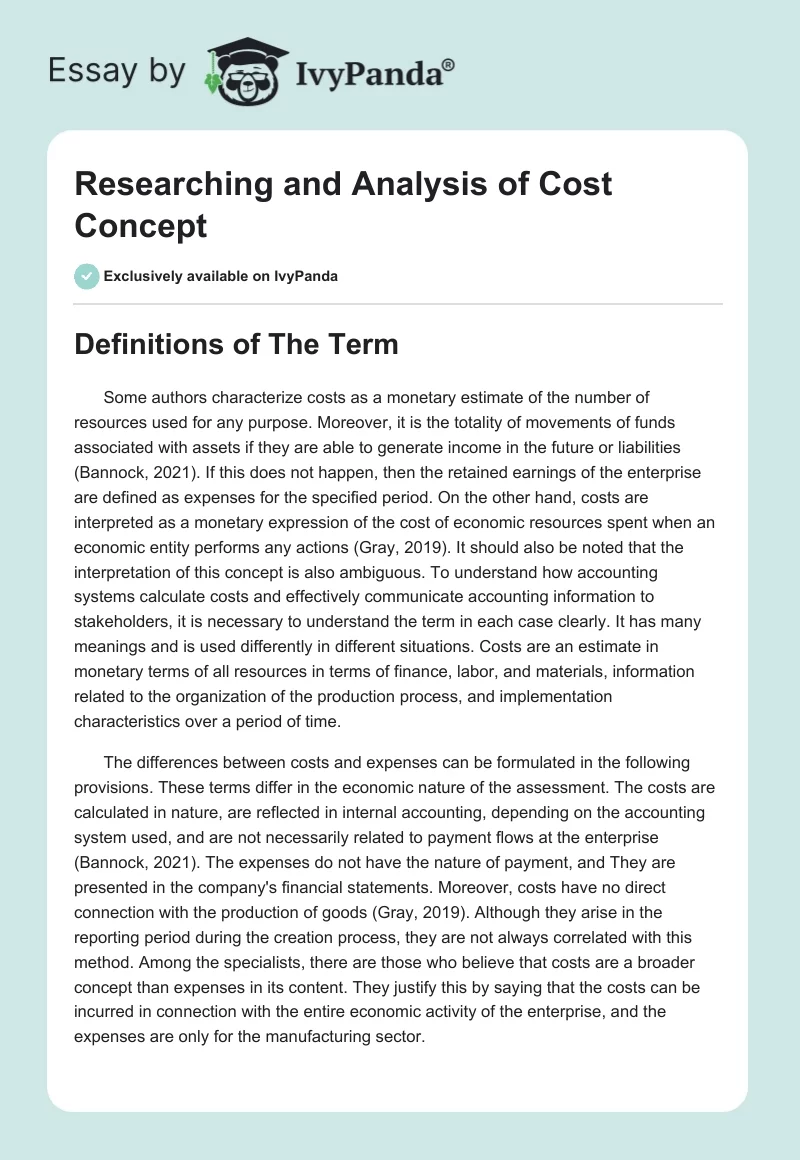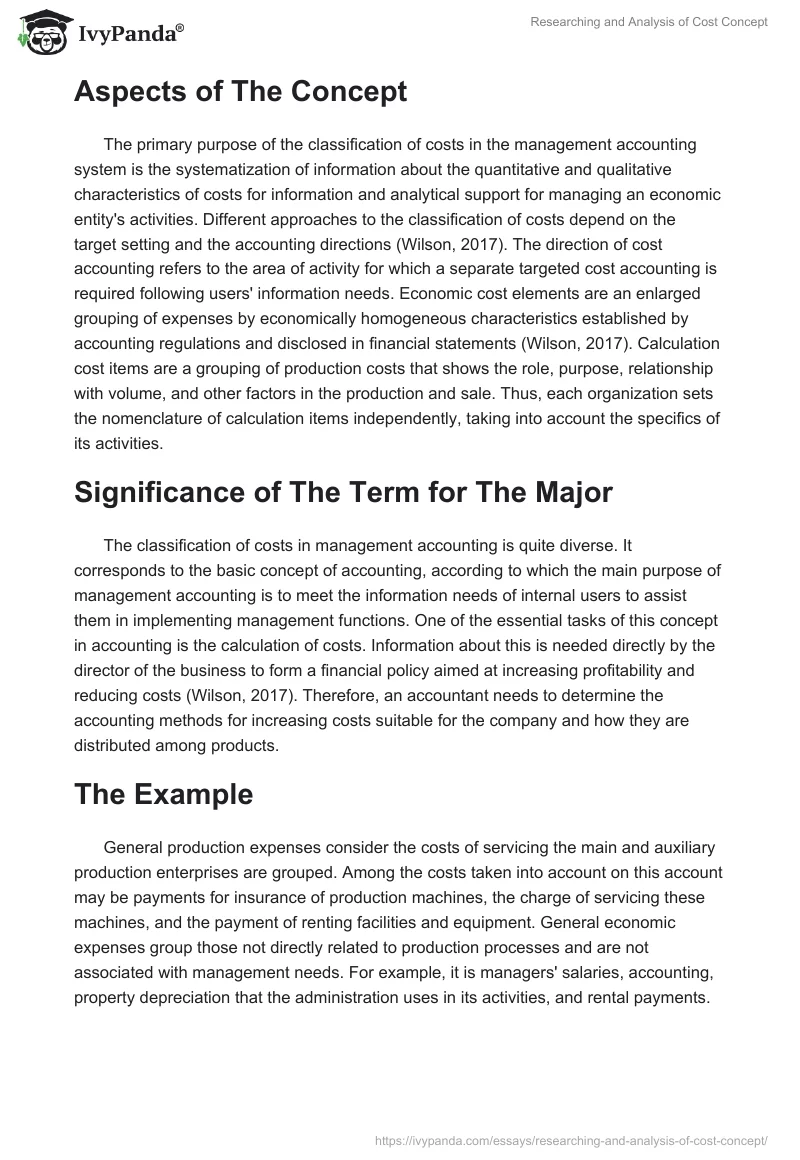Definitions of The Term
Some authors characterize costs as a monetary estimate of the number of resources used for any purpose. Moreover, it is the totality of movements of funds associated with assets if they are able to generate income in the future or liabilities (Bannock, 2021). If this does not happen, then the retained earnings of the enterprise are defined as expenses for the specified period. On the other hand, costs are interpreted as a monetary expression of the cost of economic resources spent when an economic entity performs any actions (Gray, 2019). It should also be noted that the interpretation of this concept is also ambiguous. To understand how accounting systems calculate costs and effectively communicate accounting information to stakeholders, it is necessary to understand the term in each case clearly. It has many meanings and is used differently in different situations. Costs are an estimate in monetary terms of all resources in terms of finance, labor, and materials, information related to the organization of the production process, and implementation characteristics over a period of time.
The differences between costs and expenses can be formulated in the following provisions. These terms differ in the economic nature of the assessment. The costs are calculated in nature, are reflected in internal accounting, depending on the accounting system used, and are not necessarily related to payment flows at the enterprise (Bannock, 2021). The expenses do not have the nature of payment, and They are presented in the company’s financial statements. Moreover, costs have no direct connection with the production of goods (Gray, 2019). Although they arise in the reporting period during the creation process, they are not always correlated with this method. Among the specialists, there are those who believe that costs are a broader concept than expenses in its content. They justify this by saying that the costs can be incurred in connection with the entire economic activity of the enterprise, and the expenses are only for the manufacturing sector.
Aspects of The Concept
The primary purpose of the classification of costs in the management accounting system is the systematization of information about the quantitative and qualitative characteristics of costs for information and analytical support for managing an economic entity’s activities. Different approaches to the classification of costs depend on the target setting and the accounting directions (Wilson, 2017). The direction of cost accounting refers to the area of activity for which a separate targeted cost accounting is required following users’ information needs. Economic cost elements are an enlarged grouping of expenses by economically homogeneous characteristics established by accounting regulations and disclosed in financial statements (Wilson, 2017). Calculation cost items are a grouping of production costs that shows the role, purpose, relationship with volume, and other factors in the production and sale. Thus, each organization sets the nomenclature of calculation items independently, taking into account the specifics of its activities.
Significance of The Term for The Major
The classification of costs in management accounting is quite diverse. It corresponds to the basic concept of accounting, according to which the main purpose of management accounting is to meet the information needs of internal users to assist them in implementing management functions. One of the essential tasks of this concept in accounting is the calculation of costs. Information about this is needed directly by the director of the business to form a financial policy aimed at increasing profitability and reducing costs (Wilson, 2017). Therefore, an accountant needs to determine the accounting methods for increasing costs suitable for the company and how they are distributed among products.
The Example
General production expenses consider the costs of servicing the main and auxiliary production enterprises are grouped. Among the costs taken into account on this account may be payments for insurance of production machines, the charge of servicing these machines, and the payment of renting facilities and equipment. General economic expenses group those not directly related to production processes and are not associated with management needs. For example, it is managers’ salaries, accounting, property depreciation that the administration uses in its activities, and rental payments.
References
Bannock, G. (2021). The penguin dictionary of economics (8th ed.). Penguin.
Gray, A. K. (2019). The handy accounting answer book. Visible Ink Press.
Wilson, R. (2017). The Sage dictionary of leisure studies. In S. H. Callahan (Ed.), Cost accounting (p. 15). Sage.


